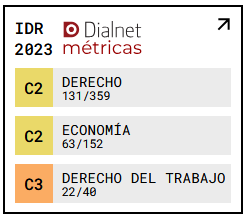What Is This Welfare State and How Is It Measured, Historically and Economically?
DOI:
https://doi.org/10.18172/redsye.6111Keywords:
Welfare state, Welfare Society, Human Rights, Social protection, Ranking of the Welfare Societies and the Position of Spanish SocietyAbstract
The Welfare State or the Welfare Society is a phenomenon that occurred and strengthened after the Second World War, following two unprecedented historical events: (i) the Universal Declaration of Human Rights (Declaration of 1948), and (ii) the development of the national social protection programs resulting from the Beveridge model (1941-1944). Currently, only those societies that effectively guarantee Human Rights, as well as basic nutrition, housing, educational and entertainment needs, could be considered as Welfare Societies. The first requirement does not allow the existence of any levels or exceptions; unlike the second requirement, which establishes a hierarchy that, as an example, leads Spain to the 16th position within the 28 members of the European Union, and to the 23th position within the most developed 40 countries in the world.
Downloads
Downloads
Published
How to Cite
Issue
Section
License
Copyright (c) 2015 The Authors

This work is licensed under a Creative Commons Attribution-NonCommercial-NoDerivatives 4.0 International License.











